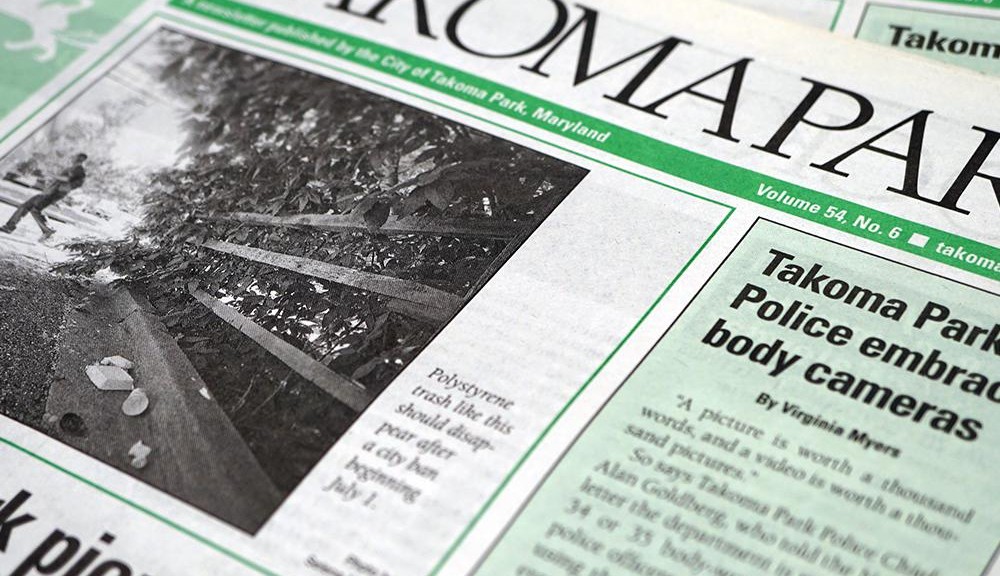By Gina Mathias
If you live in Takoma Park, chances are your house could be considered small, or even tiny, by most standards. From May 31 – June 3, we were treated to a big dose of perspective when a real tiny home on wheels stopped in Takoma Park for a week of tours and workshops. The stop was part of a year-long tour for Corbett and Grace Lunsford’s Proof is Possible. Takoma Park coordinated with the Lunsford’s and their tour sponsor ecobeco, to give them a safe place to park and live at the City parking lot next to the TPSS Co-op.
The purpose of the Proof is Possible tiny home tour is to promote high-efficiency homes, which goes a few steps beyond energy efficiency to include air quality, building materials and overall home performance. While the purpose was to show residents how they can achieve a high-performance home where they live now, the presence of the tiny home sparked interesting conversations about much more, including zoning, density, netzero energy homes, affordable housing and downsizing clutter.
Several City Council members and Mayor Stewart were spotted touring the tiny home, which was open from 5 – 6 p.m. each evening. There were also several workshops, one geared specifically for home owners. Corbett Lunsford also held two special trainings at the Community Center on advanced diagnostic testing, so our local stock of energy efficiency professionals will be better equipped to help homeowners create high performance homes.
The tour was a last-minute opportunity that ecobeco President Brian Toll offered to the City when they ran into trouble finding a place for the Lunsford’s to park for the week. The City jumped at the chance to bring something trendy and interesting to the community that also helps with the City’s efforts to win the Georgetown University Energy Prize. Attracting people to the Tiny Home for tours offered a unique opportunity to inspire others to save energy at home and to get advice from an expert. Fifty local contractors also were inspired to use the advanced diagnostics they learned to help residents who have had energy audits and want to air-seal, insulate and optimize their home’s performance.
If you missed the tiny home tour, you can watch the Lunsford’s quirky, educational videos on Corbett and Grace’s YouTube channel, “Home Performance” at www.youtube.com/ user/GreenDreamGroup. And you can catch their new TV series on PBS in early 2017, “Home Diagnosis,” which Corbett describes as “This Old House” meets “CSI.”
This article appeared in the July 2016 edition of the Takoma Park Newsletter. The Takoma Park Newsletter is available for download here.

